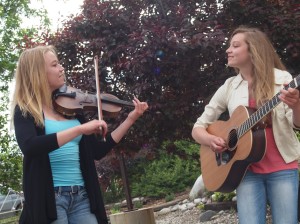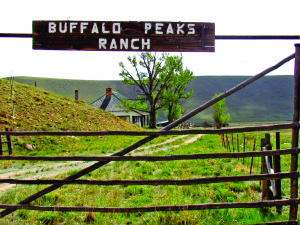by John Mattingly
After my last month’s column that took a somewhat sanguine look at the cow-calf end of the beef business, suggesting that cow-calf ranchers are basically keeping large pets, I trust readers will have sold the 100 virtual cows I gifted them for exactly what they paid for them. Not because they didn’t love the adorable beasts and their cute calves, but because they realized that to be financially rational, they couldn’t start from scratch. No, they needed to inherit the ranch, the cows, the machinery to make hay, and cheap government grazing permits.
This need for outside support in the cow-calf business is the reason ranchers come in basically three stripes: 1) They have a small herd which they support with a job in town. 2) They have a big herd supported by money from another business such as an oil well or a television company. 3) They inherited a ranch with the cows and haymaking machinery in a region where it is possible to winter the animals without much supplemental feed.
These observations are not meant to insult those who keep cows and raise calves. It is only meant to point out that this leg of the beef business is the most dependent on some sort of outside financial support in order to survive. That said, for my claim to have merit I need to explain how and why, if the cow-calf business is financially irrational, it has persisted into the 21st century? Why hasn’t it submitted to inevitable financial realities like other businesses?
First, the average cow herd in the U.S. is around fifty head, meaning that no one in the business has significant market share. In corporate America, market share is a determining operational metric, but in cow-calf ranching, the small average herd size has prevented such key operational metrics from taking command of the cow-calf industry. The industry is dominated by small players willing to subsidize their participation with an outside job, outside income or inherited wealth.
The subsidy is essential for a couple structural reasons. A cow-calf producer not only has insignificant market share, the operator has little control over market timing. Calves cannot be put on a shelf when the market goes down, waiting patiently for an upturn. Calves are constantly growing and in need of feed. At some point they become too big for the optimum point in the feeder market. Cow-calf ranchers need to sell when they need to sell, and sometimes when they have to sell. From the time a cow sees a bull to the time the rancher sells the calf is a time period measured in years.
In that time, a lot can happen with adverse weather, sickness and market fluctuations. On top of these risks, which naturally amplify with time, the cow-calf producer must bear the entire carrying cost of the capital invested in the cow. The cow is the basic capital unit in the business, requiring anywhere from $1,000 to $1,500 a head invested – which is a significant capital burden. That is, interest must be ledgered against the capital walking around on four legs as a cow, whether in the form of a bank loan or an opportunity cost of the capital. One reason the cow-calf business has persisted is that the subtle subsidies applied by the operators may not receive ledger status. Operators often don’t ledger the cost of capital against revenue, and they may ignore the value of their own labor.
A second reason for the irrational persistence of the cow-calf rancher is that ranching has tax advantages. U.S. tax codes steer people to own capital assets because capital assets can be depreciated on paper, which allows the holder of capital assets to offset a share of the earnings from capital assets with the depreciation. Over time, this can build wealth with dollars that would have gone to paying taxes, particularly if interest rates are low for the purchase of the capital asset. A cow, as breeding stock, can be depreciated. Thus, the tax code encourages the cow-calf operator to some extent, in that it enables a lifestyle choice to be aided by a tax benefit.
Third, the market price for feeder cattle – the end product of the cow-calf operation – has gone up enough in recent years to create just enough gross income to be appealing, and to keep the operators going, as long as they have one of the Big Three subsidies working for them, which in turn, tie into a tax advantage.
Fourth, cattle have long been a symbol of wealth. It’s a throwback to the notion of the European baronial estate grazed with big, inefficient beasts, a privilege of the landed aristocracy. In a real sense, cows are the “fat of the land,” and until the 1970s, beef quality in the U.S. was determined by the fat content.
When the U.S. made the decision to give land away in the West under the Homestead Act, a unique class of “landed peasants” was created – people who had land, but lacked the aristocratic bankroll to live on it without wringing every last dollar out of it. Owning cows is a perverse way of bragging to the world: “I can afford it.”
And finally, in much of the West, people have some lingering romantic notions about cows and cowboys, but they really like open space. Cows and calves need space to roam, and in more and more instances, people in an expanding urban area see value in ranches as open space. People would rather look at a green meadow with cows lumbering around on it than another cluster of box stores or tract homes. This has enabled some ranchers to sell the development rights to their land, or receive a conservation easement, or enter into some sort of open space agreement that mitigates the cost of owning the land, thus subsidizing the cow-calf operation.
So basically, if you’re coming to the beef business without any of the subsidies mentioned above, and you are compelled to financial rationality, you will not buy cows and bulls to start a cow-calf operation. You will realize that you can buy feeder calves anywhere from 500 to 650 pounds much cheaper than you can produce them. In other words, you will build or buy a feedlot.
The feedlot operator has the initial advantage of harvesting all the subsidies gifted the cow-calf producer – from inheritance to tax advantages, from cheap government grazing to conservation easements – that have gone into producing the feeder calves. And the feedlot will only have the feeder calves for four to six months. So, the capital cost is a fraction of that endured by the cow-calf operator, who bears the cost of a cow during two months of breeding, nine months of gestation, six to eight months of calf nursing, and two months of backgrounding. Not only that, the feedlot operators as a group have a form of collective market share because they all base their price offerings to ranchers for feeder calves on the metrics of time and feed costs. In other words, feedlots all across the U.S. will offer a price for feeders that makes them a profit when they use futures contracts to lock in feed costs on one side, and sell the fat cattle on the other. It’s an equation that, with good management, equals a decent profit.
That’s right, as a feedlot operator, you can use the futures market to contract corn, soy and roughage to feed the calves. You then calculate your cost of gain, cost of operations and carry, time to finish, and price of fat cattle at the projected time of finish, and you can, to a large extent, lock in a profit for your operation, based on purchasing the feeder cattle at a determined price.
Though feedlot costs vary somewhat between regions in the U.S., the variations are within a fairly tight range, determined by what the packers are paying for fat cattle, which in turn is a function of what the consumer will pay at the grocery store.
So, looking at this long chain from cow to consumer, we see a reverse pricing structure that really starts with the consumer. Meat is a “sell it or smell it” product. Butchers have to move it off the shelves, so they are sensitive to what consumers will pay, and this ultimately drives pricing mechanisms back through the supply chain to the packers, the feedlots and the cow-calf producers. The producers, being at the bottom of the supply chain, have the greatest capital costs, the longest carry time, and least control over market pricing.
When beef is for dinner, you’re eating the cow-calf producer’s lunch.
John Mattingly cultivates prose, among other things, and was most recently seen near Poncha Springs.



